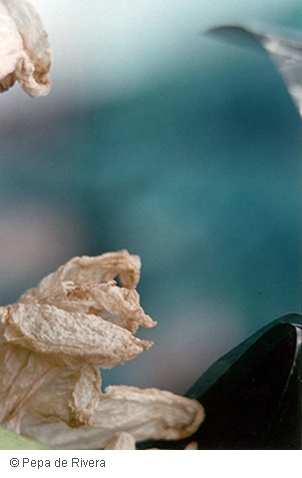A photograph is (or can be) like a poem.
© Guillermo Labarca
 Contemporary photographers and poets have many things in common: poets work with material that already exists: words. Photographers also work with existing material: landscapes, people, situations, etc. those are materials that, in both cases, preserve their identity; the words of the poets are the same ones that we use every day for multiple purposes, the images of the photographers are of objects that continue to exist outside of photography. Both poets and photographers take them out of their usual environment and give them their own meaning which emanates from the context in which they are placed.
Contemporary photographers and poets have many things in common: poets work with material that already exists: words. Photographers also work with existing material: landscapes, people, situations, etc. those are materials that, in both cases, preserve their identity; the words of the poets are the same ones that we use every day for multiple purposes, the images of the photographers are of objects that continue to exist outside of photography. Both poets and photographers take them out of their usual environment and give them their own meaning which emanates from the context in which they are placed.
Other arts such as painting, on the other hand, create their own material, their own language, as the work is done, the same occurs with musicians, dancers, actors. Their materials are not available to be used in order to express emotions, perceptions, intuitions. They have to build them by structuring a new language in each work. This means that both poets and photographers interpret an already formed reality using an already existing language, not created by them. Poets found themselves confronted with this way of treating language when they found themselves confronted with free verse at the end of the 19th century (Kahn, Laforge, Rimbaud, etc.), that is, when they freed themselves from the restrictions of meter and rhyme to go beyond the established fixed forms. The photographers, a few years later, when they freed themselves from pictorialism and the imitation of classical painting (Stieglitz). Other arts at that time also freed themselves from academic corsets but, unlike poets and photographers, they were forced to build new languages.
The exercise of poets and photographers today consists, then, in recontextualizing the material with which they work, that is to say, to reinterpret words or images of others. This is a process in which there is a first interpretation, that of the photographer, who by selecting a piece of reality, isolates it and tries to give it a meaning, and then whoever looks at it, in a second step, gives it their own meaning that does not necessarily match that of the photographer. This is how a photograph can become a poem, considering that a poem is the expression of an intuition and/or a deep perception of reality, which is not exhausted in a single glance, that is, it has multiple meanings.
A poem, like a photograph, surprises us by making us see a reality that would escape us without them. For Cortázar (why when we say Cortazar do we know that it is Julio Cortazar when there are so many Cortazars?) the value of the photo lies in its unusualness, he says that photos are usually looked at with the indifference to which the media have accustomed us , but when something unexpected happens in one of them, something unusual, even though the photo did not intend it, it is an attractive, interesting photo that pays off the time we dedicate to it. The unusual is not invented, it is not programmed, it is not deduced, it is product of an intuition. Good photographers, like good poets, do not let technique, mastery of the trade, or canonical rules drown out the perception of a reality, much less the expression of it.

